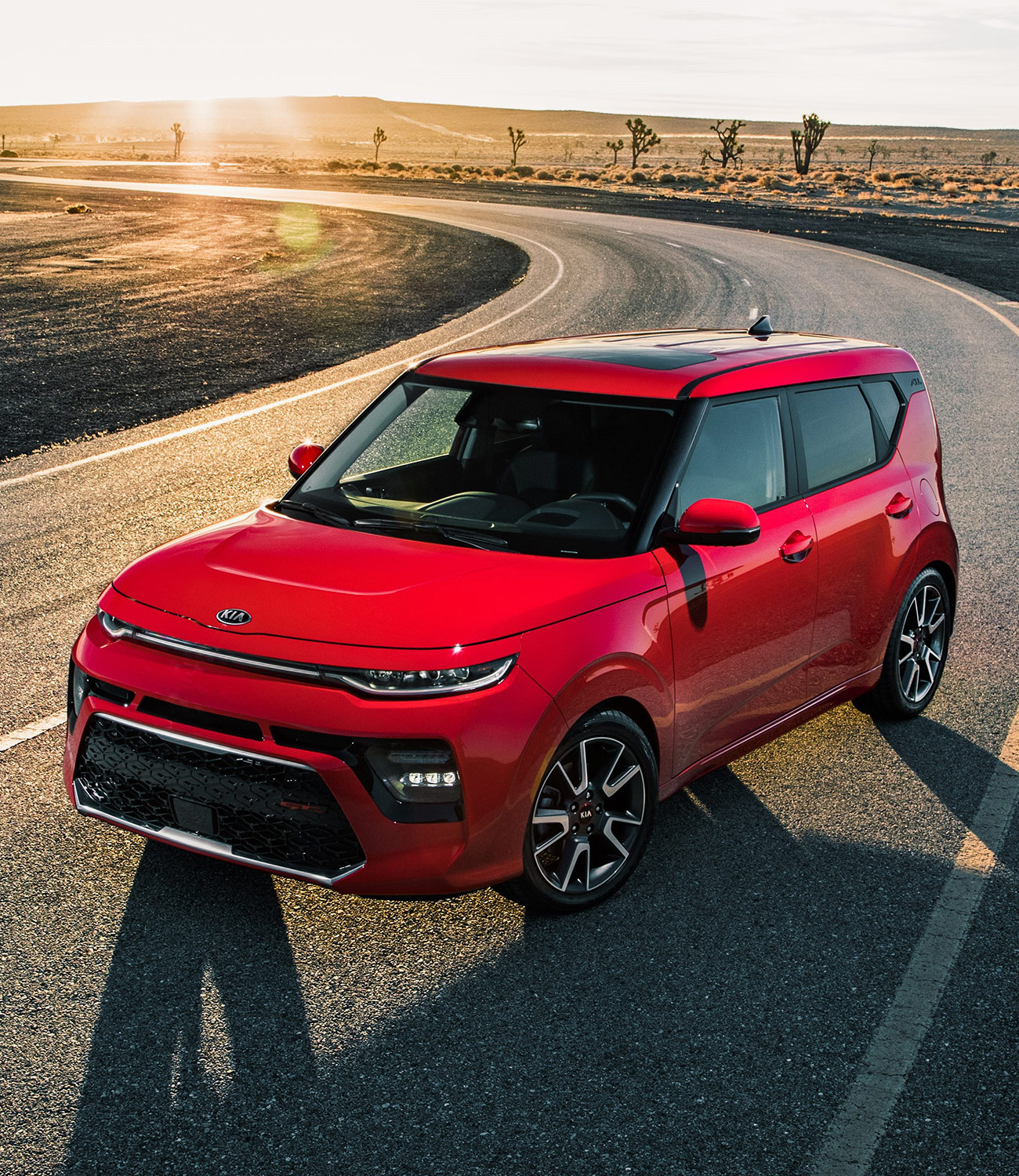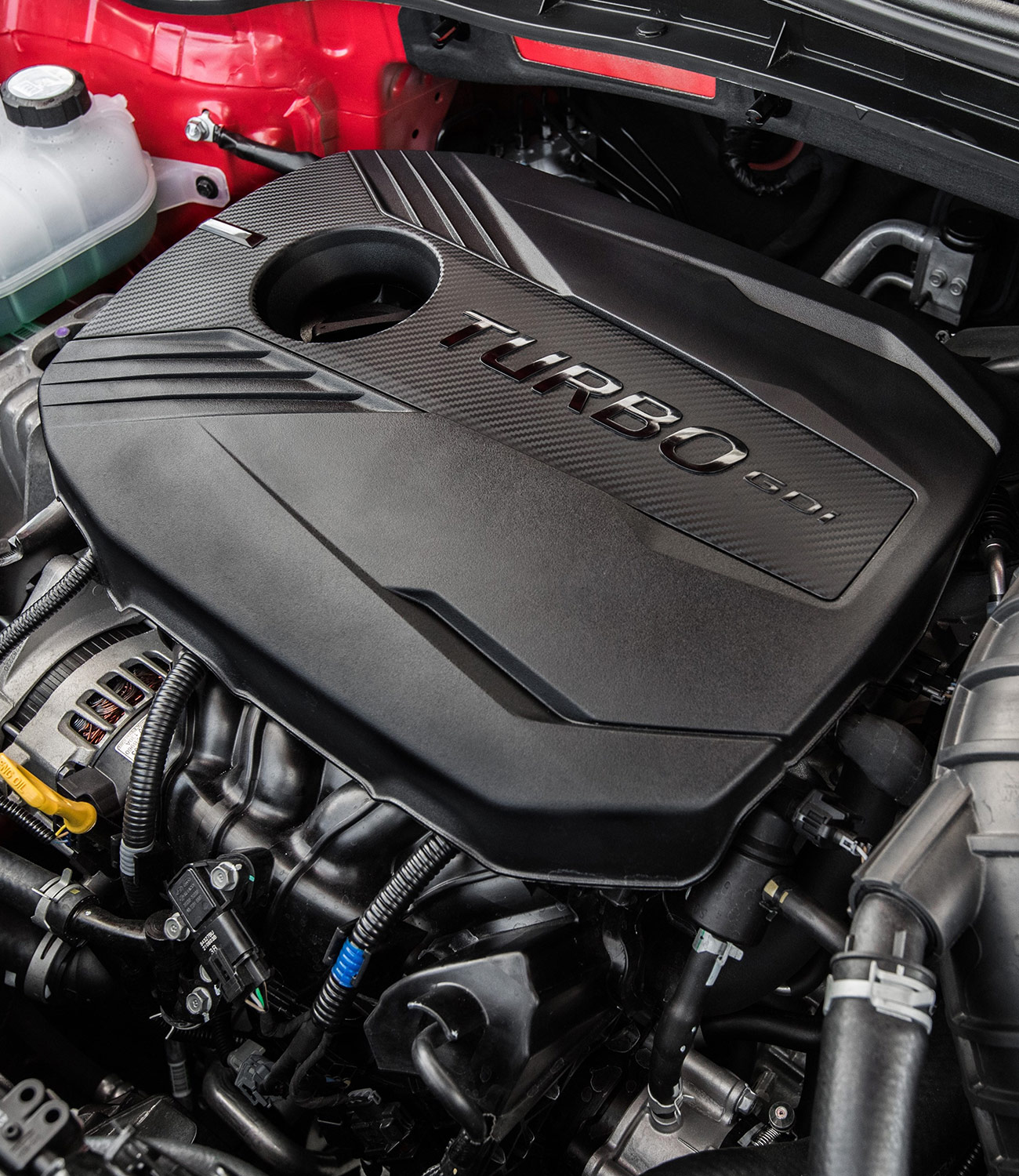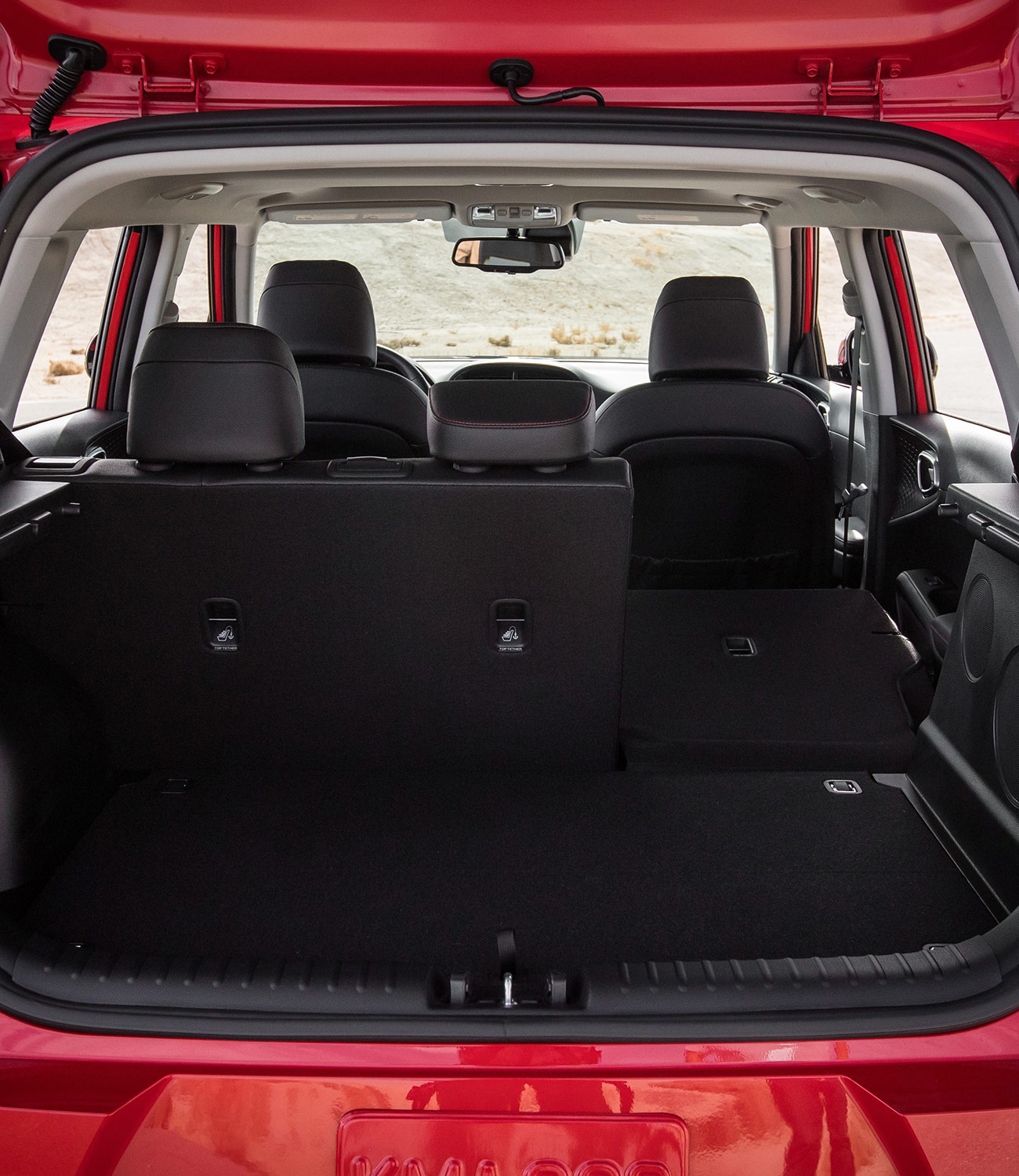The Kia Soul has served as a master class in how to create an affordable, versatile, yet distinctive small car—a class that Detroit automakers especially seem to have slept through. Since 2009, Kia has sold its Soul more than 1 million times around the world, and it’s easy to see why. This third-generation 2020 model continues the Soul’s evolution into a more grown-up quasi-crossover without screwing up its successful formula: an appealing, rectilinear shape that maximizes space for people and cargo; designers that lavish attention on even tiny details; and plenty of value, even if that gets murky on the highest-priced Turbo version.
The Good: The Soul starts at just $17,490, and while it’s boxy, there’s nothing “econobox” about it, aside from some basic plastics that are unavoidable at these prices. Slim new headlamps perch below a blunt, faux-clamshell hood that’s like a homage — or maybe a “screw you” — to Range Rover. Striking LED taillamps boomerang around nearly the entire back hatch glass and the sheetmetal “island” that’s a Soul design signature. Inside, deep etchings on genuine metal front-door trim catch and reflect natural light, making them appear illuminated from below—a design touch that Audi or Lexus would be proud to claim.
Headroom remains vast in both rows, and there’s a respective 24- and 62-cubic-feet of storage with rear seats raised or folded flat, respectively, dwarfing conventional subcompact crossovers with similar exterior dimensions. (The Soul doubles the Mazda CX-3’s cargo space behind the second row, and has nearly 50 percent more overall capacity, despite being 3.1 inches shorter than the Mazda). Ground clearance rises to a campground-friendly 6.7 inches, up from 5.9 before.
Who It’s For: Budget buyers who’d rather not draw too much attention to that fact. The children of parents who are only too cognizant of budgets, or tuition prices. City dwellers, for sure, or anyone who wants unmatched interior volume relative to a tiny exterior footprint.

Watch Out For: The old showroom bait-and-switch. My mid-level Soul X-Line test model starts from $22,485, or $22,960 as tested. It seemed worth every penny, including kicky-looking 18-inch alloy wheels, a leather-wrapped shift knob and steering wheel with audio controls, Apple CarPlay and Android Auto, a 7.0-inch center touchscreen, a rear-view camera, new driver assistance features, even — I kid you not — Hill Descent Control. The Soul EX costs $1,200 more, but you may want to stop there. Because the Soul GT-Line, with its 201-hp, 1.6-liter turbo four and dual-clutch, seven-speed automated gearbox, sends the price soaring to $28,485 — in line with, say, a Volkswagen GTI, or a smartly equipped (and relatively cavernous) Honda CR-V EX.
Considering the Kia’s mundane steering and chassis dynamics, that price seems a bridge too far for this adorable underdog. (A Soul EV with an EPA-rated 243-mile range should cost even more when it goes on sale later this year). And once again, Kia won’t deign to grant us an AWD version. It’s one feature that some crossover shoppers would happily pay extra for, whether they truly need it or not.
Alternatives: Jeep Renegade ($22,025+), Nissan Kicks ($18,640+), Toyota C-HR ($21,145+), Hyundai Kona ($19,990+)
Review: Manual fans, knock yourself out: The most-affordable Soul, the $18,485 LX Manual, gets nostalgic with a six-speed stick shift. Every other Soul ditches the previous six-speed automatic for a continuously variable transmission, or Intelligent Variable Transmission (IVT) in Kia-speak. Lo and behold, that belt-driven unit — designed in-house by Kia — is quite intelligent by CVT standards. Keep your right foot below roughly two-thirds throttle, and the CVT stays in the background where it belongs, smoothly mimicking the stepped gears of a conventional automatic transmission and rarely venturing beyond 5,000 rpm.

It’s mated to a new 2.0-liter four-cylinder that runs the fuel-saving Atkinson cycle, with 147 horsepower and 132 pound-feet of torque. That engine replaces both the wheezy 1.6-liter that powered the Soul’s previous starter model and an older, grittier 2.0-liter that made 164 horses. With the CVT swapping ratios at will, the new Soul can nip 60 mph in a useful 8.0 seconds, about 0.1 quicker than the old 164-hp model. Fuel economy carves out even bigger gains, to 29/35 mpg in city and highway — a 3-4 mpg jump over the old 2.0-liter and 2-3 mpg better than the limp, defunct 1.6-liter.
Slipping into the Kia’s surprisingly thick-bolstered seats with their upright, L’il Land Rover seating position, I found the Kia’s all-new platform and suspension geometry imparts a less-jittery ride over Brooklyn’s tough streets. Spurring the Kia along winding parkways north of New York, I heard less road noise, as well. Everything is smartly fitted and shipshape inside, including crisp analog gauges and a stress-free infotainment system.
Sadly, my Soul didn’t get the optional head-up display, 640-watt Harman Kardon audio system, or the latest take on the Soul’s whimsical interior “mood lighting:” The aforementioned metal door panels, along with door speaker surrounds, can pulse in multiple colors according to several preset musical moods, including “Romance,” “Traveling,” “Midnight City” and something called “Hey Yo!”
Hey Yo, Kia, if only your crossover was a little more soulful to drive. The Kia delivers almost ridiculous levels of grip, especially considering its modest Hankook Ventus S1 Noble2 all-season tires. Car and Driver found the Kia generated 0.91 g of lateral grip, more than a GTI or a Honda Civic Si on all-season rubber. But frustratingly, the Soul’s engine-and-CVT combo is unsuited to anything resembling sporty driving, unless you’re satisfied with picking a speed and coasting through every turn. Brake into a corner, and the Soul instantly drops its revs and refuses to pick them back up: Momentum, lost. Floor the gas early, and the engine surges out of proportion to the response you were seeking. Put the console shifter in manual mode, and you can sort of fake it by holding revs around 5,000 rpm in third gear — but that also results in enough engine moaning to suit a Civil War triage unit.

Steering is on the blah side, as well. The Kia goes where you point it, but even the latest Toyotas — including the Corolla and RAV4 — have more feel and less excess assistance. From a South Korean corporation that’s really gotten its performance act together — look at the zesty-handling Kia Stinger GT and Genesis G70 — the Soul’s lack of dynamic challenge to, say, a Mazda CX-3 is a mild disappointment.
Those knocks aside, the Kia obviously isn’t intended as an overtly hot hatchback, the Turbo version notwithstanding. Like soul music, the Soul is all about a smooth jam and an efficient, unhurried pace — with enough room to stuff Barry White in back.
Verdict: Seeking a vehicle with the fuel economy of a compact car, the versatility of a crossover, and more style and better quality than many examples of either? The 2020 Kia Soul might just be the ticket.
2020 Kia Soul X-Line Specs
Powertrain: 2.0-liter inline-four; continuously variable transmission; front-wheel-drive
Horsepower: 147
Torque: 132 pound-feet
0-60 MPH: 8.0 seconds
Fuel Economy: 27 mpg city, 33 mpg highway
Kia provided this product for review.

Hot takes and in-depth reviews on noteworthy, relevant and interesting products. Read the Story
